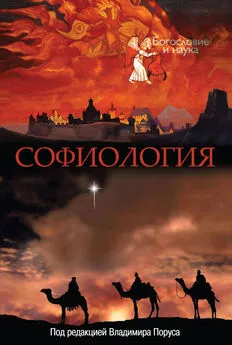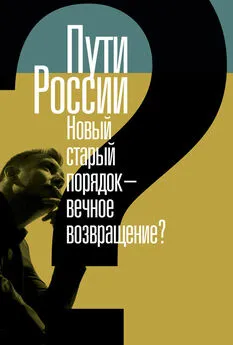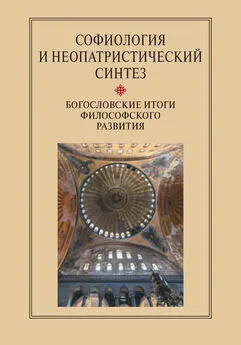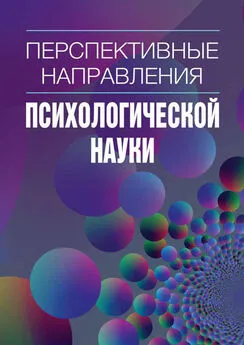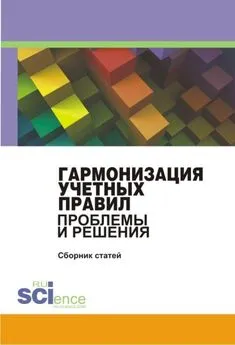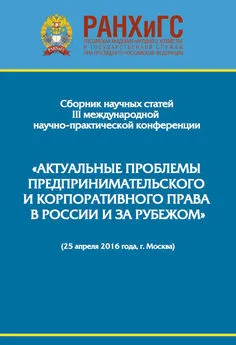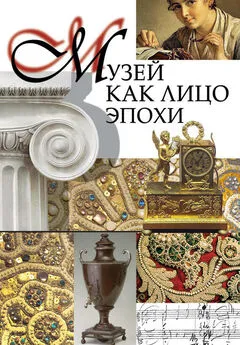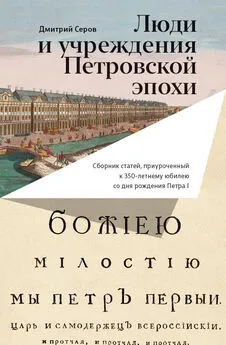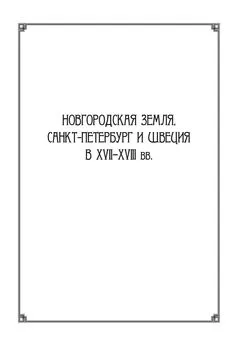Сборник статей - Софиология
- Название:Софиология
- Автор:
- Жанр:
- Издательство:Литагент «ББИ»bb9e3255-c253-11e4-a494-0025905a0812
- Год:2010
- Город:Москва
- ISBN:978-5-89647-221-6
- Рейтинг:
- Избранное:Добавить в избранное
-
Отзывы:
-
Ваша оценка:
Сборник статей - Софиология краткое содержание
Русская софиология конца XIX – начала XX вв. – самобытное и примечательное явление мировой культуры. Вокруг него продолжаются споры, острота которых свидетельствует о непреходящей актуальности поднятых русскими софиологами проблем, важнейшие из которых – способность христианской цивилизации ответить на вызовы времени, необходимость единения человечества перед лицом нарастающих глобальных кризисов, обновление веры, поиски новой рациональности как культурной ценности, разумных оснований диалога между западным и восточным христианством, между христианством и другими мировыми и национальными религиями, между различными культурами.
Настоящий сборник составлен из докладов, представленных на международной конференции «Русская софиология в европейской культуре» (Звенигород, 1–5 октября 2008 г.), организованной Библейско-богословским институтом св. ап. Андрея и Институтом восточных церквей (Регенсбург) при поддержке Католического комитета по культурному сотрудничеству (Рим, Италия).
Софиология - читать онлайн бесплатно ознакомительный отрывок
Интервал:
Закладка:
Eighteen years after he had written La Sophia, Solov’ëv took up the Meaning of Love again and discussed it more comprehensively on about eighty pages. «In the main, the arguments in this writing balance on the borders between philosophy, science, and poetry, promising fresh interaction between these three discourses.» [131]As is commonly known, this writing is a sort of polemic paper against Lev Tolstoj′s and Arthur Schopenhauer′s views on (physical) love as to merely guarantee reproduction and continuation of species [132]. The matured philosopher finally completed his early self-given task and was successful in systematically reconciling amor dei intellectuals with the eros that he radicalised significantly. In Plato, the eros prescinds from all physicalness whereas Solov’ëv, as we have seen already, targets at the physis′ deification by transfiguration and hence redemption. As he now argued, eros′ true task consists in personality′s "redemption [133]." The Solovё′vian eros does not designate either a purely natural or purely spiritual event, but, again, rather signifies a spiritual challenge to transfigure human nature. Solov’ëv suggests a paradoxical situation: spiritually, the corporeal unification of the masculine and the feminine should bring forth a metamorphosis, namely create androgynous spirituality. [134]Spiritually, also erotic love must above everything else ascend to the Divine and hence receive descendent love that never regards either race or sex. [135]Solov’ëv denies the Platonian variant of the eros, [136] for he – a consequent thinker – admits the possibility of nature′s spiritualisation. If nature′s dematerialisation is a principle call spiritualisation must be ubiquitously valid. True erotic love hence strengthens personality, for deification implies the loss of sex and acquisition of androgyny instead. Until his lifetime, as he regretted, love had unfortunately not yet flowered out. Love′s development was at the same low stage as the development of reason within the animals′ kingdom. Love still is the greatest cosmic enigma there is [137].
Basically, love is based on tripartite «faith,» namely faith in God′s existence, in my own exquisite being in God, and last but not least faith in the ′you′s′ uniqueness in God. Egoism′s abandonment necessitates unique recognition of everybody′s individual and exquisite being in God. Consequently, love needs ascendance to God by definition. Simultaneously, God′s gracious love descends to «the other,» to the «passive,» the «feminine,» to Created nature [138]. Human (carnal) love receives outmost «beauty» (italics, KB) when experienced as the gracious descending of the Divine upon nature that in turn ascends out of love. This is said to be true with regard to personal and to social aspects [139].
All social spheres work by the same principles as individual love: two wholly different yet equally dignified beings positively complement and by no means negatively delimit each other. In erotic love the ′other,′ the non-I, qualifies as everything. In social life, the collective corpus, the singular elements of which are reigned by solidarity, analogously denotes the ′other,′ and this non-I should become a complementing animated being. Active compositions between the personal I and the social corpus signify an "enlivened syzygialrelationship (zhivym sizicheskim otnosheniem)." [140] As may be concluded, man′s body, the social corpus, and the corpus of the world have ideal-real character; each represents a mystical corpus. Here finally is the central argument: the corpus, be it a natural or a social corpus does not bear independent existence, it does not exist until it is spiritualised. The social and the human corpus are identical in substance, for both belong into the sphere of nature, which seeks complementary union, seeks syzygy, complementary union with light and / or spirit. [141]Solov’ëv held that nature is to be redeemed and that "the transfiguration of Christ anticipated the transfiguration of all material being." [142]In physical life too, the surrender of the self affords to regain it in enriched form. [143]This is what is said about love in Matthew 16; 24, 25, Lucas 9; 23, 24, and Marcus 8; 34, 35. All texts are on this essential truth of regaining the self by sacrifice, excluding, of course, the carnal aspect of love. In Solov’ëv spiritualised carnal love is a form of syzygy (literally from the Greek syzigia, appearances in pairs) when segregation between creature and spirit is overcome. [144]
Consequently, man′s body, the social corpus, and the corpus of the world have ideal-real character representing each a "mystical corpus." [145]There are three items determining love′s highest form: androgyny, spiritualised human corporeality, and Godmanhood. The erotic pathos of love always seeks after corporeality (sviataia telesnost′). Yet, dignified corporeality, beautiful and eternalised by Spirit corporeality does not sprout by itself, but needs spiritual deeds by the Godman. Solov’ëv commiserates with Plato to philosophically have been on a limb with «empty hands,» for his understanding of eroticism failed acknowledge this point. [146]
In the Justification of the Good, 1894–1899, is just one, yet meaningful reference to the cited above argument: as he regrets, Christianity has merely endorsed «cherubic» existence beyond marriage. Christianity has, as Solov’ëv regrets, merely deified marriage as an institution, worthy of man′s multiplication (cf. Lucas 34–36, First Corinthean, 7). However, there is a third, the «highest,» namely "God′s way" to look at spiritualised carnal love. In this context, he hints at the two writings just discussed, namely Plato′s Life Drama and The Meaning of Love. [147] After a sharp critique by Russian Orthodoxy, [148]he seemingly had decided not to broach the ideal content of corporeal love. In the Justification of the Good this form of love holds the place of negative, offending senses: "shame (styd)" epitomises the difference between human and the animals′ being. Even in the case of humanity′s multiplication, «shame» plays a role; many pages are concerned with this problem. [149]Solov’ëv situates the feelings of "shame (styd)," "pity (zhalost′)," and "reverence (blagogoveniie)" (respectively matching the moral principles of «asceticism,» «altruism» or «solidarity,» and «piety»), at one and the same axiomatic level. These three attributes conform to the conscience′s requirements. They constitute the three-unitarian foundation of «moral perfection.» [150]
Yet, in his encyclopaedic entry on Liubov′, 1896 – composed while Solov′ev was working on the Justification of the Good – he again specified carnal love to simultaneously manifest the «strongest form of individual self-affirmation» [corresponding to ascending love] and of «self-negation» [corresponding to descending love]. As such an ambiguous event, carnal love is the «highest symbol» [vysshijsimvol] of «the ideal relationship between personal and social principles.» [151]Though spiritualised carnal love does not serve humanity′s but the individual′s perfection, it nevertheless represents one of cornerstones of ideal society′s development. For Solov′ev society".is the supplemented or expanded individual, while the individual is the condensed or concentrated society." [152]As may be concluded, only perfected individuals – individuals experienced in spiritualising syzygy in order to experience holy androgynous being – may form ideal society, Already in Filosofskie nachala tsel′nogo znaniia, 1877, he had introduced a tripartite scheme of society: 1.) the "material society [materialnoe obsh-chestvo]" is located at the fundament, the "political society [ politicheskoe obshchestvo]" occupies the midst, and the "spiritual [dukhovnoe]" or "holy society, the Church [sviashchennoe obshchestvo, Tserkov′]" tops both. As may be concluded, the third type of society appears to be the syzygial unification of the other two. [153]The «Universal Church» signifies unification of masculine and feminine elements, which correspond to Christ and nature respectively [154]
No scholar has yet presented a survey on his image of existence in pairs (syzygy) as something spread throughout his entire works. Solov′ v claims this Greek expression to best express his idea of "composition [sochetanie] ." [155] Krasota v prirode, [156] 1899, briefly treats another syzygial phenomenon, namely beauty. Beauty is not at all an indefinable property and beauty is not an expression of mere subjectivity either. Beauty signifies another fertile form of syzygy, for the sun′s light elucidates matter. Nature′s elucidation by the sun denotes the unification of two elements that are independent from each other. Their unification radiates beauty. [157]Man′s self-consciousness relates to the animals′ as beauty in art relates to beauty in nature. Art is not a mere repetition of the artistic deeds begun by nature but their continuation by analogously creating syzygial unities between the lucidity of human ideas and nature. [158]
Syzygy opens out into Solov′ev′s metaphysically religious notion of Trinity. I call this interdependence between unity in pairs and Trinity a ′trinitarian double helix.′ This expression indicates the trinitarian structure of the cosmos, of the world, and of ideal society (the Universal Church, viz. Sophia). The (self-) realisation of the latter depends in turn on multiple unifications of opposites. Syzygy is the way of repairing dissociation. Syzygial unities generate «mystical» and / or «religious experience» [159]making man anticipate the ′sophianic′ social ideal.
To conclude:
1. Unification of opposites releases mystical experience. Mystical and / or religious experience thus denotes the individualisation of All-Unity, a unity that bears androgynous character. Conscious experience of syzygy generates, as I conclude, prophetic faith, a type of faith that is sufficient to bestow on people a befitting foundation of social life.
2. Conscious loving thus bears objective power that surrounds Creation in spiritualising nature, and vice versa, in materialising spirit. This is the central idea to Solov′ev′s notion of theurgy, which he did not elaborate into a redefined discourse. For him, theurgy apparently was a self-evident matter, since he made permanent use of it from the beginning without explaining it at any length. His encyclopaedic entry on mysticism (1896, Mistika, Mistit-sizm) explains: "Mysticism describes phenomena and human acts, which independently from the spheres of space, time, and physical causality relate man with mysterious creatures and energies (.) There is prophetic mysticism (.) and practical mysticism that attempts (.) to call forth plastic forms and materialise spiritual creatures, or de-materialise (spiritualise, KB) corporeality and such alike more." [160]3.) Spiritualisation of nature thus is theurgy, for it unites the spiritual ′I′ with the ′empirical-I′ by means of dematerialisation and / or conscious spiritualisation. 4.) Divine Wisdom (Sophia) descends by virtue of syzygial experience and desirably indwells human consciousness. Co-creative activity springs from this peculiar type of experience that does not need to be rationalised, or exhaustively explained in order to improve personal and social life. As it stands, Christian faith in the trueness of the experienced is the sufficient condition to co-creativity that prepares free theocracy in a first and Sophia, the Universal Church, in second step.
Читать дальшеИнтервал:
Закладка:
